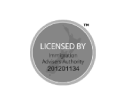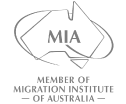Migrating to Australia as a skilled worker is a significant undertaking, filled with exciting possibilities. However, the application process can feel like navigating a minefield of paperwork. This guide is designed to clearly communicate the crucial documents you’ll need to ensure your application is comprehensive, accurate, and ultimately, successful. Think of this as your definitive document checklist, helping you avoid costly delays and rejections.
Why Documentation is King: Setting the Stage for Success
The Australian Department of Home Affairs operates on a strict points-based system and requires substantial evidence to support your claims. Providing the correct documents upfront demonstrates your credibility and attention to detail, significantly increasing your chances of a smooth application process. Missing or incorrect documents are a leading cause of visa refusals, so meticulous preparation is key. Let’s dive into the essential paperwork.
1. Passport and Travel Documents: Your Foundation
Your passport is the cornerstone of your application. Ensure that your passport has at least six months of validity from your planned date of entry into Australia. Include copies of all pages, even blank ones (as some countries use these for endorsements). Also, include copies of previous visas or entry stamps to Australia or other countries, if applicable. This provides a comprehensive immigration history.
2. Skills Assessment: Proving Your Expertise
A positive skills assessment from a relevant Australian assessing authority is often a mandatory requirement for many skilled visas. This assessment verifies that your qualifications and experience meet Australian standards for your nominated occupation. Each assessing authority has specific document requirements, so review their guidelines carefully well in advance. Typically, you’ll need to provide:
- Educational Qualifications: Certified copies of your degree certificates, diplomas, and academic transcripts. These must be translated into English by a NAATI-accredited translator.
- Employment References: Detailed letters from your employers outlining your job title, responsibilities, duration of employment, and salary. These should be on official company letterhead and signed by a senior manager or HR representative.
- Curriculum Vitae (CV) / Resume: A comprehensive overview of your work history, skills, and qualifications. Tailor it to highlight the skills relevant to your nominated occupation.
3. Educational Qualifications: Showcasing Your Academic Achievements
You must provide certified copies of all your educational qualifications, including:
- Degree Certificates: Bachelor’s, Master’s, or Doctoral degrees.
- Diplomas and Certificates: Any vocational or professional qualifications.
- Academic Transcripts: Detailed records of your subjects and grades.
If your qualifications are from a non-English speaking institution, you’ll need to provide certified translations of all documents. Also, consider obtaining an assessment of your qualifications from an organization like VETASSESS to determine their Australian equivalent.
4. English Language Proficiency: Meeting the Language Requirement
Demonstrating English language proficiency is a non-negotiable requirement for most skilled visas. You’ll typically need to take an approved English language test, such as:
- International English Language Testing System (IELTS)
- Test of English as a Foreign Language (TOEFL) iBT
- Pearson Test of English (PTE) Academic
Achieving the required score is crucial, as it directly impacts your points score and visa eligibility. Check the specific requirements for your chosen visa subclass.
5. Employment History: Validating Your Work Experience
Accurate and detailed evidence of your employment history is essential. Provide the following:
- Employment References: As mentioned earlier, these letters should clearly outline your job duties, employment dates, and salary.
- Payslips: Copies of your payslips can corroborate your salary information.
- Tax Returns: Providing tax returns can further validate your employment history and income.
- Employment Contracts: If available, include copies of your employment contracts.
6. Proof of Funds: Demonstrating Financial Capacity
The Australian government requires you to demonstrate that you have sufficient funds to support yourself and your family upon arrival in Australia. The amount of funds required varies depending on the visa subclass and the number of family members included in your application. Acceptable evidence includes:
- Bank Statements: Showing a consistent balance over a period of time (typically 3-6 months).
- Fixed Deposit Certificates: Evidence of fixed-term deposits.
- Investment Statements: Showing the value of your investments.
Consult the Department of Home Affairs website for the specific financial requirements for your visa subclass.
7. Character Certificate: Maintaining Australia’s Integrity
You’ll need to provide police certificates from every country where you have lived for 12 months or more in the past 10 years. Each country has its own process for obtaining a police certificate, so start this process early as it can take time. Failure to disclose any criminal history can lead to visa refusal.
8. Marriage Certificate and Family Documents (If Applicable): Family Matters
If you are including your spouse or dependent children in your visa application, you’ll need to provide:
- Marriage Certificate: A certified copy of your marriage certificate.
- Birth Certificates: For each dependent child.
- Adoption Papers: If applicable.
- Custody Documents: If applicable, provide evidence of custody arrangements for children from previous relationships.
9. Health Examinations: Ensuring Public Health Standards
As part of the visa application process, you and your family members will need to undergo medical examinations by a panel physician approved by the Australian government. These examinations assess your health status and ensure that you meet Australia’s health requirements.
10. Nomination/Sponsorship Documents (If Applicable): Securing Your Place
If you are applying for a state-nominated or employer-sponsored visa, you’ll need to provide evidence of your nomination or sponsorship. This typically includes:
- Nomination Approval Letter: From the relevant state or territory government.
- Sponsorship Approval Letter: From your employer.
- Employment Contract: Outlining the terms and conditions of your employment.
Conclusion: Preparing For Your New Life
Gathering these documents may seem daunting, but with careful planning and organization, you can streamline the process. Start early, pay close attention to detail, and seek professional assistance from a registered migration agent if needed. Accurate and complete documentation is the key to unlocking your Australian dream. By diligently assembling these ten essential documents, you’ll be well-prepared to embark on this exciting new chapter in your life.










